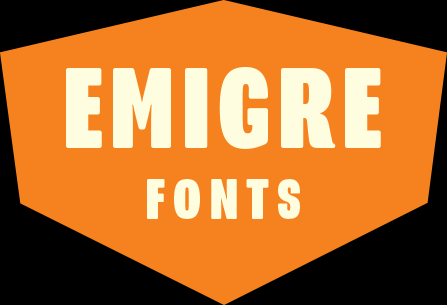Ambition/Fear
Zuzana Licko and Rudy VanderLans
This article was first published in 1989 in Emigre 11.
Visions of bold-italic-outline-shadow Helvetica “Mac” tricks have sent many graphic designers running back to their T-squares and rubber cement. Knowing how and when to use computers is difficult, since we have only begun to witness their capabilities. Some designers have found computers a creative salvation from the boredom of familiar methodologies, while others have utilized this new technology to expedite traditional production processes. For this eleventh issue of Emigre we interviewed fifteen graphic designers from around the world, and talked about how they work their way through the sometimes frustrating task of integrating this new technology into their daily practices.
Computer technology provides opportunities for more specialization as well as integration. Today, less peripheral knowledge and skills are required to master a particular niche. For instance, a type designer is no longer required to be a creative mind as well as a skilled punch cutter. There is also the possibility of better communication, allowing for increased crossover between disciplines. Designers can control all aspects of production and design, no longer requiring an outside typesetter or color separator. Text, image and layout all exist as manifestations of the same medium and the capability of simultaneously editing text and composing the layout will influence both design and writing styles. It is now possible for one individual to take on all functions required in publishing, including writer, editor, designer, and illustrator, thus bringing together a variety of disciplines and consequently streamlining production.
The integration of previously isolated disciplines makes computer-aided design a seamless continuum of activity similar to that experienced by children. In fact, computer technology has advanced the state of graphic art by such a quantum leap into the future that it has brought the designer back to the most primitive of graphic ideas and methods. It’s no wonder that our first computer-generated art usually resembles that of naive cave paintings! This return to our primeval ideas allows us to reconsider the basic assumptions made in the creative design process, bringing excitement and creativity to aspects of design that have been forgotten since the days of letterpress. We are once again faced with evaluating the basic rules of design that we formerly took for granted.
With computers many options of type combinations, sizes and spacings can be quickly and economically reviewed. However, the time saved in the production stage is often spent viewing more design solutions. Thus today’s designers must learn to discriminate intelligently among all of the choices, a task requiring a solid understanding of fundamentals.
Computer use also brings about a new breed of designers who possess the ability to integrate various media. Those individuals previously hinged between disciplines will find that digital technology allows them that crossover necessary for their personal expression. One such new area is that of digital type design. Custom typefaces can now be produced letter, by letter, as called for in day-by-day applications. This increases the potential for more personalized typefaces as it becomes economically feasible to create letter forms for specific uses.
By making publishing and dissemination of information faster and less expensive, computer technology has made it feasible to reach a smaller audience more effectively. It is no longer necessary to market for the lowest common denominator. There is already a growth in the birthrate of small circulation magazines and journals. Although this increases diversity and subsequently the chances of tailoring the product to the consumer, we can only hope that such abundance will not obliterate our choices by overwhelming us with options. Computers are phenomenally adept at storing information, but the current rate of its amassment is making a frightening task out of distilling knowledge from these huge data banks. Raw information becomes meaningful only when we can access it in a comprehensive manner.
The storage and transmission of text and images is also becoming progressively less physical as data is sent over phone lines and accessed through computer terminals. Digital data is easily modifiable and it is difficult to draw the lines of ownership and copyrights. Problems of piracy are already evident in areas of program development, type design, and illustration. For example, some illustrators using digital media now opt to submit hard copy artwork to clients rather than disk versions fearing that their illustrations could be copied and manipulated into a misrepresentation of their work, without deserved royalties. This brings up numerous previously unaddressed questions over ownership of data and our rights to use or even alter it.
But what separates digital art from its analog counterparts aesthetically? Mostly it is our perception. There is nothing intrinsically “computer-like” about digitally generated images. Low-end devices such as the Macintosh do not yield a stronger inherent style than do the high-end Scitex systems, which are often perceived as functioning invisibly and seamlessly. This merely shows what computer virgins we are. High-end computers have been painstakingly programmed to mimic traditional techniques such as airbrushing or calligraphy, whereas the low-end machines force us to deal with more original, sometimes alien, manifestations. Coarse bitmaps are no more visibly obtrusive than the texture of oil paint on a canvas, but our unfamiliarity with bitmaps causes us to confuse the medium with the message. Creating a graphic language with today’s tools will mean forgetting the styles of archaic technologies and remembering the very basic of design principles.
This is perhaps the most exciting of times for designers. Digital technology is a great big unknown, and after all, a mystery is the most stimulating force in unleashing the imagination.


